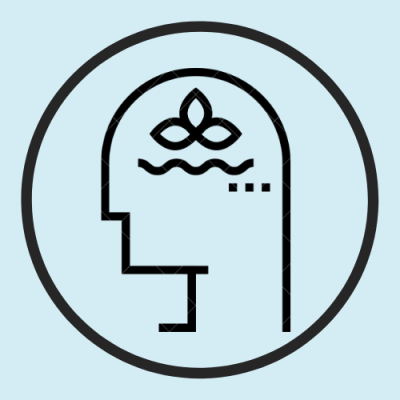
Yesterday I wrote about how I introduce secondary source research to students. Those 7 questions, are, of course, only the starting point for helping students to get the full benefit from engaging with the work of other thinkers.
When our students are working with secondary source material in their writing, we should be encouraging them to use their sources to explicitly support, develop, or refine their own argument. We sometimes forget that student writers can become part of the wider critical conversation on a topic. By helping them to use their sources to develop their argument, rather than simply reiterating the arguments of others, we can help them to enter that conversation as well.
To help students reach toward increasingly more sophisticated use of secondary source material, I first introduce Bloom’s Taxonomy as a model of comprehension in any learning process:
- Knowledge
- Comprehension
- Application
- Analysis
- Synthesis
- Evaluation
‘Knowledge’ is the most fundamental stage in Bloom’s Taxonomy—learners will have just an understanding of the basic facts, terms, and ideas. When they move to the next stage of ‘Comprehension’, they begin to express their ability to summarise or paraphrase key ideas. With ‘Application’ comes the ability to organise the new
information in helpful ways, and with ‘Analysis’ comes the ability to begin to see the richer meanings and ideas that are emerging from the source. ‘Synthesis’ allows the learner to begin seeing the information in relation to other relevant or related materials, and, finally, through ‘Evaluation’ the learner is able to present a full, rich, synoptic view of the literature in the field.
In order to see how Bloom’s Taxonomy might be used to think about the process of working with sources, let’s look at it in this way:
- KNOWLEDGE—Sources are read, but not referred to.
- COMPREHENSION—Connections are drawn between the source and the text. (e.g. ‘Katherine Duncan-Jones has written on the role of the courtier in Sir Philip Sidney’s poetry.’)
- APPLICATION—Sources are used to support student’s own point. (e.g. ‘Edward Said, in his book On Late Style, agrees that an author’s ‘late style’ is dependent upon the type of contemplative inward turn that can come later in life.’)
- ANALYSIS—The central point of the source is used to help fertilise student’s own analysis. (e.g. ‘Niall Ferguson’s economic study of American culture can provide a helpful approach to the kinds of issues emerging in Roth’s work.’)
- SYNTHESIS—The relationships between sources are considered. (e.g. ‘In recent work, both Geoff Gilbert and Alexandra Harris have explored the specific rearward-facing quality of British modernism, a movement customarily associated with intensification, newness and forward momentum.’)
- EVALUATION—The shape of the full body of work around the student’s topic is evaluated. (e.g. ‘Theorists of literary influence have portrayed the relationships between texts as dependent upon two metaphors of virility, revealed elsewhere in literary studies as inescapably flawed: 1) the metaphor of author-as-father-to-the-text, and 2) the metaphor of authorship-as-immortality.’)
Most student essays will contain a mixture of these different use. Of course it can be important to make a casual connection, or to support a contentious point with the words of an authoritative critic. Having said this though, the stages of Bloom’s Taxonomy also provide the opportunity for us to encourage students to reach toward more sophisticated uses of their source material.
Take, for instance, the ‘Comprehension’ example from above: ‘Katherine Duncan-Jones has written on the role of the courtier in Sir Philip Sidney’s poetry.’ It is not difficult at all to transform this ‘Comprehension’ example into an ‘Application’ example by simply putting it into the context of one’s own points. For example: ‘Katherine Duncan-Jones’s reading of the courtier in Sidney’s work suggests the political, social, and economic role played by the court masque.’ Suddenly the student’s use of this source has been taken to a more advanced level, and demonstrates a stronger command of this material.
Using Bloom’s Taxonomy in this way offers a helpful and convenient tool in the feedback process by providing a point of reference for what a secondary source can and should do in student writing. With careful suggestions at both the formative and summative stages, students can begin to find opportunities for creating richer and more meaningful engagements with their source material.
Related articles
- How does the “Flow of Information” influence the digital age? (pagetoscreendigitalage.wordpress.com)
- Falling Standards In Education Could Be Reversed By Library Use (spyghana.com)
- Blog 3 Information Literacy (becstar999.wordpress.com)
Discover more from Allan Johnson, PhD
Subscribe to get the latest posts sent to your email.

Reblogged this on Meny Snoweballes and commented:
Before I launch into blogging myself, here’s a useful post by Allan Johnson on making use of the pedagogical model called Bloom’s Taxonomy to articulate to students how they can make better use of secondary source material. I’ve spent quite a lot of time this year reading pedagogical material, and I will probably blog on some of my thoughts about it at some point anon. This blog post is a good example of how educational theory, often dismissed by teachers in higher education as jargon that attempts to teach grandmothers how to suck eggs, can be utilised effectively in a classroom situation.